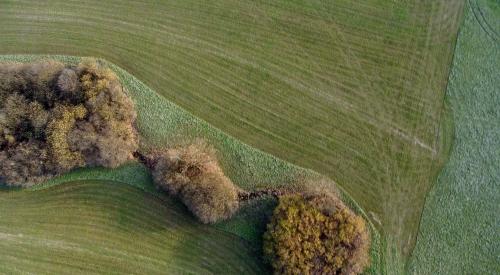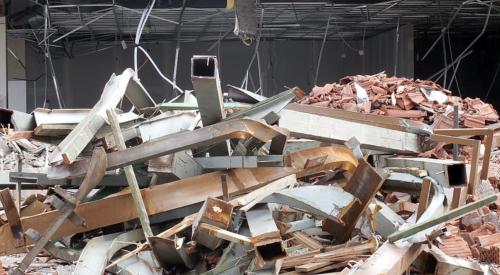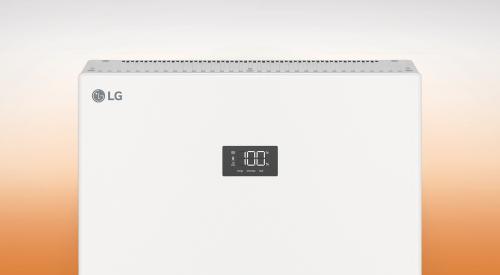 |
Small wind turbines generate power for homes in almost every state, and a lot of people are willing to spend the extra money to generate their own electricity. So before you blow off this idea, let's look at the state of wind power for single-family homes.
Up and BlowingAccording to the NAHB Research Center, homes in at least 47 states now use 100 percent renewable, non-polluting wind to generate power.
The typical residential application is a wind-powered generator, or turbine, situated atop an 80- to 100-foot tower with blades approximately 10 feet long. The power from the turbine connects to the home's main electric service.
Some wind turbine installations are independent of the grid, using batteries for storage of excess electricity. But the majority of customers choose a grid-connected system because most electric utilities will credit the homeowner's account for excess power that feeds back to the grid. This is known as net metering.
"Our electric rates are in tiers: the more electricity you use, the more you pay for each kilowatt-hour (kWh)," says Beverly Guasti of Guasti Construction in Oak Hills, Calif. "With net metering, when wind generates more power than the house needs, the electric meter spins backwards. That means they're saving as much as $0.30/kWh," for example.
The Wind Blows for TheeWind turbines are best suited for remote or low-density residential lots of one acre or more. For a typical home, a unit rated between 5 and 15 kW will meet most electricity needs. If the owner wants to save on energy costs, the property should have at least a 10 mph average wind speed, and the homeowner should be paying at least $.10/kWh for electricity.
Build Them and They Will TurnMost dealers offer installation and ready-to-operate systems, and you have the option to purchase directly from the factory and install the system yourself. The biggest challenge for the uninitiated builder is assembling and erecting a 100-foot tall, 4,000-pound steel tower.
To make it easier, many builders choose tilt-up towers, guyed lattice or pipe towers that are assembled on the ground with the wind generator in-place and raised to a standing position from ground level with a winch, truck or tractor. If the wind turbine needs maintenance, the tower can be lowered back to the ground, eliminating the need for climbing. Even if you're terrified of heights, you can install and service your own.
Do Your HomeworkIf you're considering a wind system, the first step is to check wind resource maps. Next, review local zoning, building codes and neighborhood covenants, and obtain required permits or variances. Some developments have adopted restrictive covenants that do not allow wind turbines. The manufacturer usually can provide supporting technical information. Not surprisingly, the most typical variance needed is for height restrictions.
For an on-the-grid system, the local utility needs to be involved in setting up the connection. The complexity of this connection depends on local regulations and the utility's desire to streamline the process.
Maximize the BenefitsInstalled, a complete, grid-interconnected, 10-kW wind turbine usually costs between $40,000 and $50,000 and will produce between 800 and 2,000 kWh per month (depending on the wind resource). This translates into monthly savings of $80-$200 when electricity costs $0.10 per kWh.
Many states and localities offer tax incentives or rebates that reduce the real cost significantly. Guasti says the firm's typical 10-kW system costs about $50,000 to install, but California offers a rebate of $21,150. In New York, incentives are based on the size of the system and the installed cost. For a 10-kW system, incentives cover 50 percent of the installed cost. The New York incentive goes directly to the installer.
Why Bother?Why devote the time and money to installing a turbine? Because you can differentiate yourself from other builders.
Look at the future from a financial and environmental perspective, and anticipate what that means to home-owners.
Sure, the decision to install a wind turbine can be driven by return on investment and payback, but there are more compelling reasons: energy independence, energy price stability and a desire to contribute to a cleaner environment.
Over its life, a small residential wind turbine can offset about 1.2 tons of air pollutants and 200 tons of greenhouse gases, according to the American Wind Energy Association.
Maybe these wind turbines make sense after all. The owners of Guasti Construction think so. After all, their home has two of them.
Online Resources
- For more detail, a list of manufacturers, and other resources, visit www.toolbase.org and search for "Wind Power Generator."
- For state wind maps at http://www.nrel.gov/wind/resource_assessment.html.
- No study of wind power is complete without a visit to the American Wind Energy Association (AWEA) at www.awea.org.
 Most of Guasti Construction's 80 wind turbine customers sit on lots 2.5 acres and larger. |
Glen Salas writes about better building practices on behalf of the Partnership for Advancing Technology in Housing (PATH). PATH is administered by the U.S. Department of Housing and Urban Development. Learn more at











